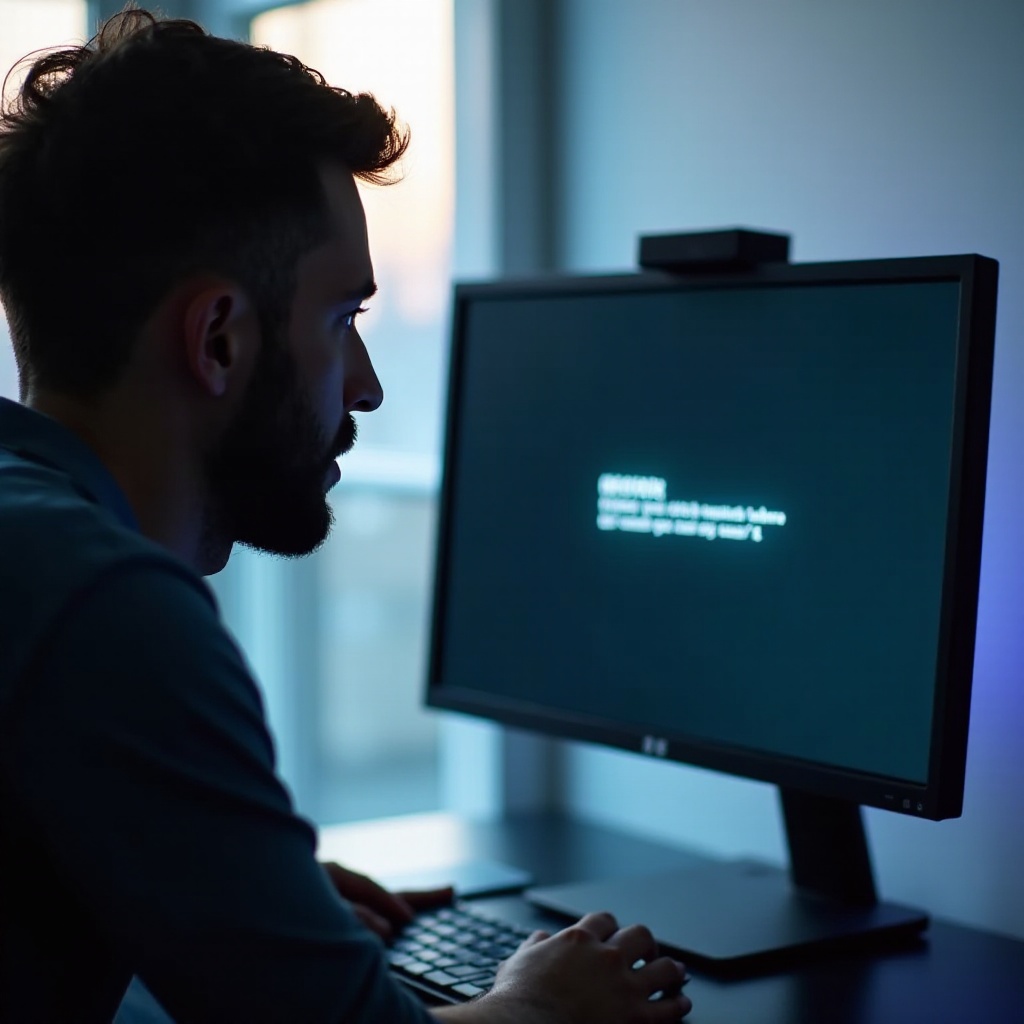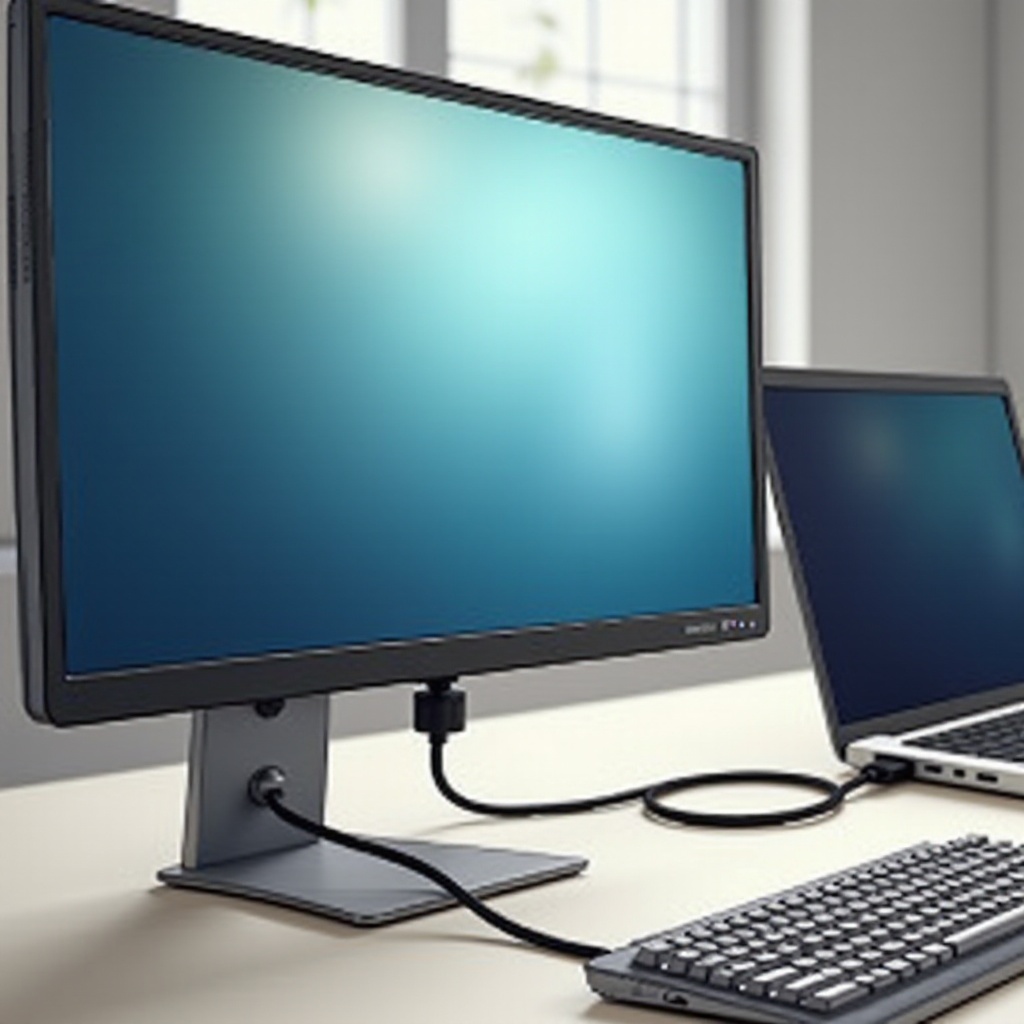
Introduction
Are you frustrated by your HP monitor showing no signal despite being connected via an HDMI cable? HDMI, known for offering excellent audio and video quality, can sometimes present connectivity challenges. This guide is intended to help you understand the possible reasons your HP monitor may not respond to an HDMI connection and, most importantly, how to resolve the issue effectively. Understanding the root causes, from faulty HDMI cables to device compatibility discrepancies, is crucial in simplifying the troubleshooting process.

Understanding HDMI Inactivity on HP Monitors
HDMI inactivity is a common issue that arises when your HP monitor fails to recognize input from a connected device. Such disruptions not only affect your workflow but can also prevent access to critical applications or content. When an HDMI port remains inactive, it signifies a communication failure between your device and monitor, typically resulting in a blank screen. Recognizing the cause is essential as the first step in restoring your monitor to full functionality, ensuring your daily activities remain smooth and uninterrupted.

Common Causes of HDMI Inactivity
Several reasons might cause your HP monitor to reject HDMI inputs. By identifying these causes, you can troubleshoot more effectively.
Faulty HDMI Cables and Connections
One prevalent issue behind HDMI inactivity is a faulty HDMI cable. Damaged or degraded cables can disrupt signal transmission, leaving your monitor unable to detect input. Connections that are not firmly in place may lead to similar problems.
Incorrect Input Source on the Monitor
Your monitor might not recognize the HDMI connection if the input source is set incorrectly. Monitors often support multiple input types, and selecting the wrong one can lead to display issues.
Compatibility Issues between Monitor and Devices
Not all devices are seamlessly compatible over HDMI. Issues may stem from discrepancies between the output device settings and what your HP monitor accepts, leading to signal loss or inactivity.
How to Troubleshoot HDMI Inactivity
When troubleshooting HDMI inactivity, consider the following steps to address possible causes effectively.
Inspect and Replace HDMI Cables
- Check for Damage: Examine your HDMI cable for visible damage, such as fraying or bent pins.
- Test with Another Cable: If you notice damage or if the cable is old, use a new HDMI cable to check if the problem persists.
Verify and Adjust Input Source Settings
- Access Monitor Settings: Use your monitor’s buttons to navigate to the input source menu.
- Select the Correct Source: Ensure the source is set to HDMI if multiple connection options are available.
Ensure Device and Monitor Compatibility
- Check Monitor Specifications: Confirm if your HDMI version matches the one supported by your device.
- Update Device Output Settings: Adjust the output resolution on the sending device to match your monitor’s capabilities. This often resolves compatibility issues.
Advanced Troubleshooting Techniques
When basic troubleshooting does not resolve the issue, consider the following advanced techniques.
Testing Alternative Devices and Inputs
- Connect Different Devices: Attach another device to your HP monitor to verify if the HDMI port functions. This can help identify whether the problem originates from the monitor or your original device.
- Try Different Ports: Use alternative HDMI ports on your HP monitor to exclude the possibility of port malfunctions.
Conducting a Factory Reset on the Monitor
- Reset Monitor Settings: Access the monitor menu to perform a factory reset, reverting settings to their default state. This may solve configuration-related issues.
- Caution During Reset: Remember that resetting will erase all personalized settings.
Preventative Measures for HDMI Connectivity
Adopting preventative strategies can help maintain consistent HDMI connectivity.
Regular Monitor and Cable Maintenance
- Routine Checks: Regularly inspect your cables and connections for signs of wear or damage.
- Proper Placement: Avoid bending or coiling HDMI cables excessively, as this can degrade quality over time.
Keeping Device and Monitor Software Updated
- Update Software: Regularly update your monitor’s firmware and device drivers to ensure compatibility.
- Enable Auto-Update: Activate automatic updates for your drivers and firmware when possible.

Conclusion
Resolving HDMI inactivity on HP monitors involves understanding the issue, identifying its root cause, and applying the appropriate troubleshooting steps. Routine maintenance and timely updates can prevent future occurrences. By assessing cable quality, input settings, and compatibility, you can restore your monitor’s connectivity, minimizing downtime and improving efficiency.
Frequently Asked Questions
How can I tell if my HDMI cable is the problem?
If swapping HDMI cables resolves the issue, the original cable is likely faulty. Look for damage like bends or exposed wires as indicators of cable issues.
What should I do if my HP monitor doesn’t recognize HDMI input?
Begin by checking cables and connections, and make sure the correct input is selected. If needed, test with different devices and ports.
Is it possible to fix HDMI inactivity without professional help?
Yes, basic troubleshooting steps such as cable inspection, input source verification, and device compatibility checks typically resolve the issue without professional intervention.
